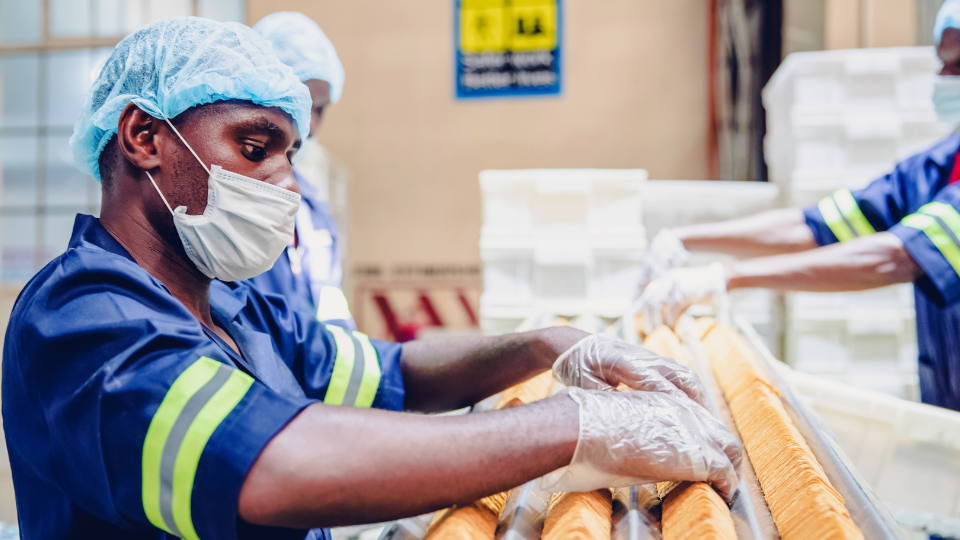July 12, 2023

Ensuring food safety is vital for the fight against drug-resistant infections.
In the latest One Health Trust blog, guest writer George Gitau of Students Against Superbugs Africa recounts the stories of “Nuru” and “Nala” of Kenya and their battles with difficult-to-treat food-borne illnesses. Their stories highlight the relationship between food safety and antimicrobial resistance (AMR). Gitau also underlines the challenges faced by people in low-income countries who face significant financial barriers and often cannot easily access the treatments they need. [One Health Trust]
OHT researchers helped gauge attitudes towards SARS-CoV-2 self-testing in Peru.
OHT researchers and collaborators conducted a survey-based study in September 2021 that aimed to assess the values and attitudes of two populations in Peru, one in the city of Lima and one in the rural community of Valle del Mantaro, towards SARS-CoV-2 self-testing. They found that 86.96 percent of respondents agreed with the idea of self-testing and nearly 78.95 percent said they would use self-tests once available. Nearly 95 percent of respondents also expressed willingness to pay for a self-test if it was not provided for free by health authorities. Only 76.07 percent of female respondents and 83.96 percent of male respondents in Valle del Mantaro expressed that they would notify close contacts following a positive self-test, compared to 91.76 percent of female and 91.27 percent of male respondents in Lima who expressed the same sentiment. The researchers recommend using interventions to educate the public on the purpose and utility of self-testing. [BMJ Open]
El Niño climate events were spatially and temporally associated with malaria outbreaks in Ethiopia.
Researchers investigated malaria-climate associations in Ethiopia, with a focus on the impact of El Niño Southern Oscillation (ENSO) on climate conditions and past malaria epidemics between 1950 and 2016. They found that El Niño events – when sea surface temperatures in the central and eastern Pacific Ocean are above average – were strongly correlated with a higher maximum temperature (Tmax), drought in northwest Ethiopia during the rainy season, and unusually heavy rains in southeast Ethiopia in the last three months of the year. Widespread malaria epidemics were associated with El Niño events with higher Tmax and frequent droughts. With the most recent El Niño event starting last month, concerns of climate-related malaria epidemics are high. [Malaria Journal]
Antibiotic use was high for COVID-19 patients despite a low prevalence of confirmed bacterial coinfection.
A retrospective cross-sectional study conducted at a hospital in the Philippines from March 2020 to March 2021 revealed that 57.3 percent of COVID-19 patients received antibiotic therapy whereas only 1.9 percent had confirmed a bacterial co-infection. Antibiotic use was associated with bilateral lung infiltrates in X-rays and difficulties in differentiating bacterial and viral pneumonia upon patient presentation, as well as a high white blood cell count and COVID-19 severity. This trend has been observed globally. Clinicians must appropriately and judiciously use antibiotics in infected patients in order to curb the development and spread of AMR. [Western Pacific Surveillance Response Journal]
Reevaluating rabies postexposure prophylaxis decision-making in the United States
Rabies is a zoonotic viral disease that is endemic to most countries with a relative risk to humans that varies based on local reservoir species and human-animal interaction patterns. Despite its near 100 percent fatality rate without treatment, treatment in the form of postexposure prophylaxis (PEP) has a near 100 percent success rate. However, in the US, an average of 55,000 people received PEP between 2017 and 2018 even if their exposure was low risk. Low-risk exposures include bites from vaccinated animals whereas high-risk exposures include unprovoked attacks from wild mammals that are ill or acting strangely. At an average cost of over US$3,800 per person, it is recommended that PEP be used judiciously and only after the completion of a risk assessment. [JAMA Network]
Locally-acquired cases of malaria were detected in the United States.
In mid-2023, locally acquired cases of mosquito-transmitted Plasmodium vivax malaria were detected in Florida and Texas, the first locally-acquired cases since 2003. While no evidence suggests that the cases in the two states are related, four of the cases detected in Florida were in geographical proximity. Active mosquito surveillance and control measures have been implemented by the CDC in conjunction with local health departments in the area. With increased international travel in the summer of 2023, the CDC notes concerns about a rise in imported cases of malaria, necessitating expanded access to artesunate, the first-line treatment option for severe malaria. [CDC Health Alert Network]
Global public health policy should target HIV prevention in older children and adolescents.
A systematic analysis of the Global Burden of Disease from 1990-2019 illustrates a shift in the burden of communicable diseases from young children to adolescents. During the study period, communicable disease mortality declined significantly for children younger than five years of age, influenced in part by successful HIV parent-to-child prevention efforts and early antiretroviral therapy. However, tuberculosis and HIV emerged as the leading causes of death for adolescents aged 20-24, with HIV being responsible for 20.9 percent of the disease burden for females in this age group. These trends highlight the need for global health policy to focus HIV and tuberculosis prevention efforts on older adolescents, particularly in low-and-middle-income countries. [The Lancet]
Image from Canva











